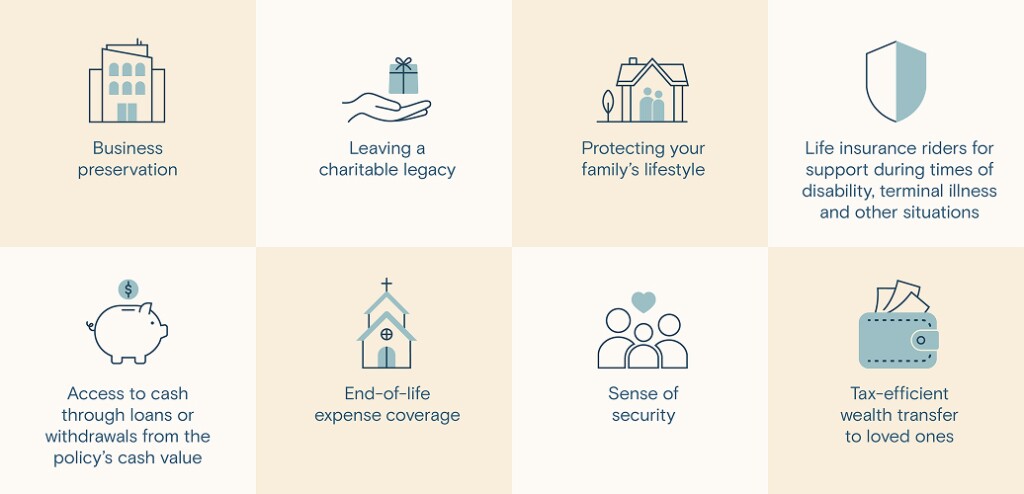Here, underwriters determine your health classification and premium rate based on your application. Generally, the better your classification, the lower your premium. Here's what you can expect during the life insurance underwriting process.
What is life insurance underwriting?
The life insurance underwriting process determines your insurability. The insurance company employs underwriters who review your application and rate various factors, such as your age, health, occupation, lifestyle and family medical history, to decide your classification.
They often evaluate these factors and rationale:
- Height and weight. Being overweight can lead to health issues and potential future health complications.
- Existing medical conditions
- Treatment and/or medications
- Surgeries
- Blood and urine test results
- Lifestyle. Drug and/or alcohol use can have health repercussions and lead to risky behavior.
- Avocations. Skydiving, rock climbing or motor racing can increase the likelihood of accidents or death.
- Tobacco use. Tobacco products are linked to many health concerns.
- Family medical history. A history of early-onset diseases or hereditary conditions may impact your risk profile.
Based on that assessment, insurers assign you to a classification category that helps determine premium. If the insurer thinks they're assuming more risk by insuring you, they may deny coverage or charge a higher premium.
How long does underwriting take?
Depending on your health, application and type of coverage you need, the underwriting process may take a few days or up to several weeks. Every stage of your life insurance application may add time to the overall process. For example, if the insurer needs to follow up with your doctor or you need an in-person paramedical exam, that may add a few days or weeks.
Stages of the underwriting process
Generally, the insurer needs time to review and verify your application. During this process, the insurer may:
- Review your application for accuracy. The insurer confirms the information in your application is correct. A representative may call you to go over your health, family medical history, and hobbies to double-check what you've provided.
- Request an in-person paramedical exam. Depending on the coverage you want, you may have to undergo an in-person paramedical exam as part of the application process. In some cases, the insurer may request an exam before the underwriting process begins. The exam usually takes around 30 minutes. It's similar to a standard checkup from your doctor, though the insurer pays for it and provides the technician. In rare circumstances, you may have to undergo additional testing, such as an EKG or stress test.
- Contact your doctor. Depending on your health and paramedical exam results, the insurer may contact your doctor for a copy of your medical records. It may help clear up any questions the insurer has about your health history. The insurer also reviews any prescriptions you've taken, even if you aren't taking them anymore.
- Ask for further lifestyle and financial information. While your health information makes up a significant portion of your life insurance application, your lifestyle and finances matter, too. So, the insurer may ask for a motor vehicle report to review your driving history for unsafe behavior. It also may assess your financial stability and look for bankruptcies or signs of significant debts.
What is accelerated underwriting?
Insurers are looking for methods to speed up the underwriting process. For certain applicants—usually those in good health between ages 18 to 60—it's possible to go through an accelerated underwriting process. Essentially, the insurer will triage your application to determine if you need an in-person paramedical exam, which would add time and effort.
They'll review your medical history, past life insurance applications, prescription history, driving history and consumer score. If your application presents low-risk, you could be routed to a simpler track of approval, where you complete a Declaration of Insurability via an online assessment or tele-interview. Otherwise, you may continue on the paramedical exam track.
Accelerated underwriting doesn't require any higher premiums in exchange for this streamlined approach. It's simply a potential option your insurer might offer for a smoother approval process. Even with accelerated underwriting, approval is not necessarily guaranteed.
How life insurance underwriters might classify you
To give you a final classification, the insurer assesses your information alongside actuarial tables, which determine the probability you may pass at any given age. That classification determines the type of life insurance contract and premium you're offered. You could be placed in one of these categories:
- Preferred Best or Preferred Select. You're in excellent health, aren't overweight and have few or no harmful habits.
- Super-Preferred. These applicants have minimal risk factors but aren't quite rated as best.
- Preferred. You're in good health but might have some minor health problems.
- Standard. Most people fit here and are in average health.
- Preferred Tobacco. These are applicants who qualify as preferred, but who use tobacco.
- Standard Tobacco. Applicants who qualify as standard, but who use tobacco, fall into this category.
- Substandard or Rated. If you have a complicated medical history or other high-risk factors, you could have high rates or even be denied coverage.
If your health improves, you might be able to get reevaluated or apply for a new contract to reduce your premium.
Planning for the underwriting process
The best way you can prepare for the underwriting process is to feel confident about your life insurance application. After all, once you've submitted your paperwork, it's in the underwriters' hands to determine your insurability.
A







